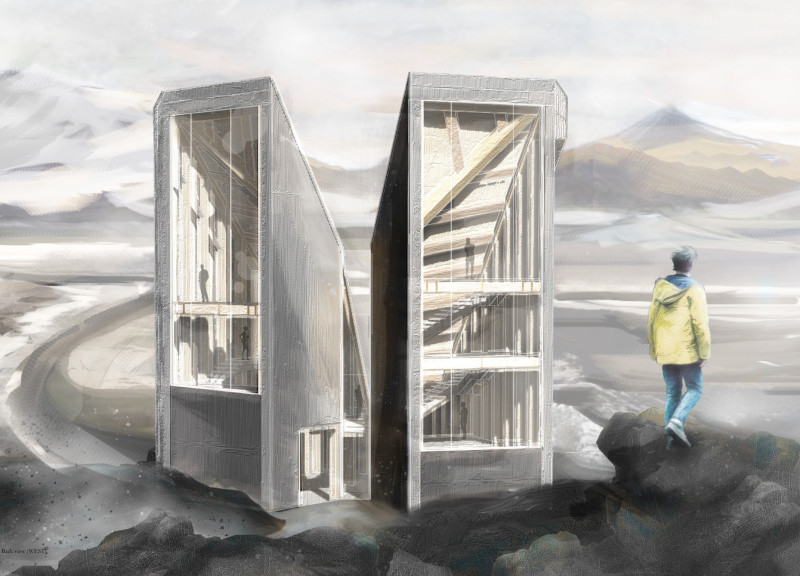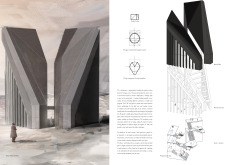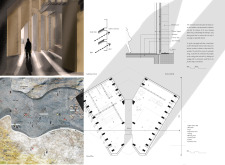5 key facts about this project
The design is situated in the Krafla volcanic region, where two significant lava caves—Grjotagja and Vogagjá—are found. Grjotagja is notable for its unusual water source, while Vogagjá serves as a hidden dwelling, accessible by a winding path through the rugged terrain of lava rock. This location, at the tectonic divide between Europe and America, shapes a concept that focuses on enhancing the natural environment while providing an engaging experience for visitors.
Structure and Materials
The primary feature is a basalt tower composed of two separate volumes that rise from the local materials unique to the Vogar region, such as basaltic quartz and volcanic rock. Pathways made of compressed basalt sand lead visitors throughout the site, promoting an intimate connection with the landscape. These design elements reinforce the relationship between the built structure and its geological context.
Visitor Experience
Elevated pathways lined with dark lava granules offer views over the tectonic fissure. Thin metal blades delineate the landscape and create versatile elements like stairways, benches, and information panels. These features improve access and encourage movement, making the site not just functional but also enjoyable for those who explore it.
Spatial Dynamics
Outdoor spaces incorporate a hexagonal floor inspired by the microscopic structure of basalt rock. This design creates a tactile surface that invites visitors to feel a part of the geological landscape. The arrangement fosters open movement across various viewing platforms, each providing specific angles of the natural formations, prompting a deeper engagement with the environment.
Design Detail
Barriers are skillfully integrated into the layout, maintaining a balance between public spaces and moments for personal reflection. The thoughtful organization of these elements invites guests to appreciate the unique features of the area while offering pauses for quiet contemplation among the volcanic surroundings.






















































